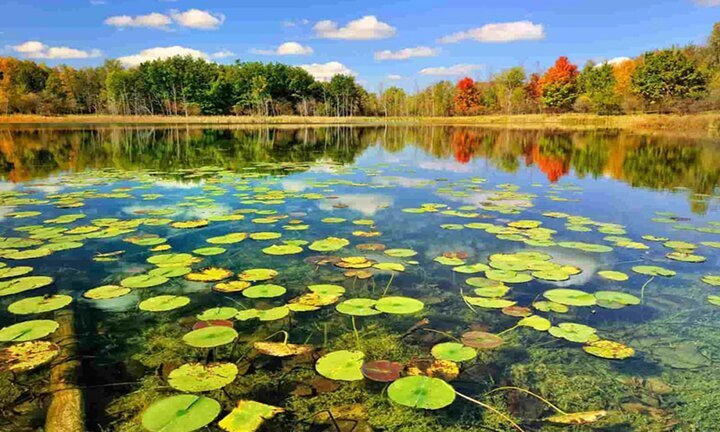Tehran – Iran has designated May 21 (Ordibehesht 31) as “Ecotourism National Day.”
Iranian ecotourism opens the gateway to experience the country’s stunning natural landscapes and rich cultural heritage, with a focus on sustainability, Mehr’s news agency writes.
Through Iranian ecotourism, travelers can embark on adventures ranging from trekking through lush forests to exploring the vast desert. Iranian ecotourism is dedicated to minimizing the ecological footprint of tourism and ensuring that Iranian beauty remains intact for future generations, and contributes to all travel not only to adventure but also to conservation efforts.
Within the Iranian ecotourism realm, tourists are taking on the role of protecting nature and are actively working to minimize their environmental footprint. This conscious approach extends beyond conservation efforts and also encompasses commitment to communities within these natural areas. When visiting communities’ communities, tourists play an important role in supporting economic growth.
They accomplish this by purchasing local products and crafts and choosing to stay in an eco-friendly resort. This not only enriches their travel experience with authentic cultural immersion, but also ensures that their visits will actively contribute to local economy and sustainability initiatives and strengthen the symbiotic relationship between travelers and the natural world.
Ecotourism serves as one of the effective strategies for the economic, social and environmental development of destinations.
Today, many policies aim to develop ecotourism and take advantage of its benefits, especially in developing countries with rich natural resources. Iran is one of the countries with the potential to develop ecotourism.
However, there is no consistent plan to use the county’s potential in this respect. Therefore, serious measures need to be taken to develop ecotourism and optimally utilize Iran’s natural resources.
The results show that Iran’s most important aspects of ecotourism development can be listed in order of importance as follows: management, infrastructure development, marketing and training, and human resources development. Furthermore, the key ecotourism development strategies in order of importance are:
Marketing activities will be carried out to increase the market share of ecotourism, diversify Iran’s ecotourism products, improve access roads to tourist villages, and promote increased resilience to natural disasters at destinations.
This study, which explored the fundamental conditions of Iran, proposed a model for Iran’s ecotourism development as a potential destination for ecotourism. The findings can provide practical and scientific guidelines for managers and policymakers seeking to develop ecotourism in Iran.
Iran’s EcoTool Tours are as diverse as its landscapes, offering a variety of experiences coordinated to showcase the country’s natural beauty and ecological diversity while promoting conservation and sustainable travel. Below are some notable types of ecotourism tours available in Iran:
Nature Trekking and Climbing: Explore Iran’s rugged terrain, from the mountains of Alboz and Zagros to the lesser-known ranges, providing trails for trekkers and climbers of all levels.
Desert Safari: Challenge vast deserts like Dasht-e Kavir and Lut Desert to stargaze, comel trek and experience traditional desert life.
Wildlife Watching: Iran’s rich biodiversity can be observed in many national parks and reserves, including Golestan, where travelers can find rare species like Persian leopards.
Culture and Village Tour: Discover traditional lifestyles and sustainable practices of rural communities in areas such as Abhiyane and Masle, and integrate cultural heritage with natural beauty.
Adventure Sports: For those seeking adrenaline, Iran offers river rafting, skiing and paragliding in a variety of natural environments, combining thrills and scenic beauty.
Plant Tour: Iran’s unique plants attract botany enthusiasts for exploration and research, especially in areas like the Hikerian Forest (UNESCO World Heritage Site).
Ecovolunteer opportunities: Participation in conservation projects, wildlife surveillance, or community-based initiatives that contribute to the conservation of Iran’s natural resources.
Each of these tours offers an immersive experience of Iranian ecotourism, allowing travelers to connect with nature, engage with local culture and contribute to environmental conservation efforts.
Iranian ecotourism presents stunning natural destinations, from the lofty peaks of Mount Damavand to the mysterious Martian mountains. These top attractions offer breathtaking beauty and deep connection to nature, highlighting the country’s diverse landscape. As visitors explore Iran’s ecological wonders, they not only enjoy the scenery, but also gain insight into the importance of maintaining such treasures. Iran’s natural locations are a call for adventure and protection, and are an essential destination for eco-friendly travelers looking to discover the hidden gems of the Earth.
Ecotourism is a form of nature-oriented tourism aimed at contributing to the conservation of the natural environment, generally defined as minimally influential, including providing both conservation and contributions to environmental education.
KD

